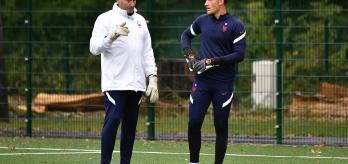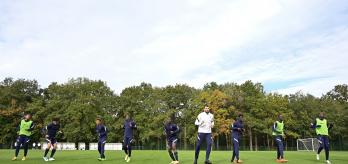Based on their video analysis of Wales’s previous games, the France U17 coaching staff expect the Welsh to line up in a 4‑4‑2 diamond. Vannuchi is looking to tactically prepare his players to deal with the problems the diamond system could pose against their 4‑3‑3 formation. Wales’s numerical advantage in the middle third and the 2v2 scenario that pits the Welsh forwards against the French centre‑backs means that France’s full‑backs have a crucial role to play.
In this small group session, Vannuchi and Hamonic work with ten outfield players on a series of exercises encouraging finding the free player to overcome the opposition’s press.
The session is divided into three parts. The first part involves a physical and technical activation to prepare the players for the physical demands of the session. The second part consists of a passing circuit that involves the repetition of technical actions and encourages players to time their runs and passes. The session ends with a possession‑based game where two jokers (neutral players) represent the full‑backs the team must find in their game against Wales. The following session involves ten outfield players.
Session overview
Key coaching points
-
Encourage players to time their runs and passes to create space and find the free player with a view to progressing possession.
-
Encourage players to combine in one‑ or two‑touch moves to put the opposition under time pressure and create space to progress possession.
-
Develop good information‑gathering and communication habits amongst players to allow them to move the ball quickly against the opposition’s press and in tight spaces.
-
Retain good team shape during the possession phase by forming triangles around the ball, which allows players to combine or draw in the opposition and create opportunities to play lofted passes to overcome the press
Exercise 1 – physical and technical activation
This exercise serves to prepare the players for the rest of the session. The coach organises an exercise that combines a technical, ball‑based component and physical work without a ball. Players perform a series of technical moves at varying levels of intensity, along with some dynamic stretching exercises.
-
Mark out a 20x15m playing area using four markers.
-
Each player is given a ball.
-
The coach calls out the various technical actions and movements without the ball to be performed by the players.
-
Players leave the playing area to carry out the dynamic stretches, before returning to collect a ball and move on to the technical component.
-
The exercise switches between the technical and physical component every 20‑30 seconds.
-
Vary the dribbling technique (inside and outside of foot, right and left foot, etc.).
-
Alternate between knee raises, heel kicks, side steps, etc.
-
Juggle the ball on the spot and on the move.
-
Prepare the players physically for the session.
-
Add a technical component to prepare the players for the following exercise.
Exercise 2 – passing circuit
This exercise allows the players to build on the physical work carried out in the previous drill. It involves an analytical exercise that focuses on passing and control, and the timing of the players’ off‑the‑ball movement. The main aim of the exercise is to improve the quality of one‑ and two‑touch passing between team‑mates.
-
Mark out two playing areas and place 5 players in each.
-
In each playing area, set out four markers approximately 18m from each other in a diamond shape.
-
The exercise is performed simultaneously in the two playing areas.
-
One ball per playing area.
-
The first player at the head of the diamond dribbles the ball towards the unoccupied marker.
-
Once they reach the marker, they pass the ball to the player at the base of the diamond, who plays a one‑two with them around the marker.
-
This player then passes the ball to the player to their right, who plays a one‑ or two‑touch pass to the player positioned at the head of the diamond.
-
Each player follows their pass so that three of the four markers are occupied at all times.
-
The exercise begins with 2 players situated at the marker at the head of the diamond.
-
Change the direction of the circuit.
-
Players must time their runs to receive the ball away from the marker and on the move.
-
The ball‑carrying player must play a well‑timed pass to exploit their team‑mate’s movement, while also ensuring that the pass is appropriately weighted based on the space available to the recipient so as to allow them to play a first‑time pass if under pressure or a two‑touch pass if they have more time.
-
Emphasise the accuracy and quality of passes. Passes should be played towards the recipient’s furthest foot to allow them to play forwards on their first touch, where possible. Passes should be played along the ground to make it easier for the recipient to receive the pass.
-
The recipient of the pass should adopt a body shape that allows them to receive the ball on their furthest foot and play forwards on their first touch, where possible. The recipient of the pass should adopt a three-quarter body position to enable them to play forwards on their first touch, when required.
Exercise 3 – positional possession game: 4v4, plus 2 jokers
The final part of the session is a 4v4+2 positional possession game which introduces one of the tactical aspects of the U17’s upcoming match against Wales, the use of the free player. During the match the players will be encouraged to find their fullbacks, who will be the free players, to bypass the opposition press. The exercise allows the players to work on this tactical principle in a small-sided game.
-
Mark out a 20x15m playing area using four markers.
-
Create a 4v4 scenario inside the playing area.
-
Place 2 jokers outside the playing area, one at each end.
-
The jokers are limited to two touches.
-
Arrange the in‑possession team in a 2-1-1 formation across the length of the playing area, with the 2 jokers representing full‑backs in a four‑player defence.
-
The out‑of‑possession team are free to set up however they like, but they must transition quickly into a 2‑1‑1 formation as soon as they gain possession.
-
When a team lose the ball, they are encouraged to try to win it back as quickly as possible.
-
If the joker plays a first‑time pass into the playing area, the recipient may take two touches. However, if the joker plays a two‑touch pass into the playing area, the recipient is limited to one touch.
-
Players are encouraged to collect information before receiving the ball to allow them to identify and find the free player with a view to progressing possession when facing a press.
-
The ball must be moved quickly (in one or two touches) to overcome the opposition’s high‑intensity press. Players should recognise when to play lofted passes to break through the press. This applies particularly to passes played from one joker to the other to switch the play.
-
Players should communicate with each other to aid their team‑mates’ decision‑making and avoid giving the ball away.
-
Players are asked to react quickly in transitions, be it when their team are seeking to regain possession or reorganising themselves into the 2‑1‑1 in‑possession formation after having won the ball back.












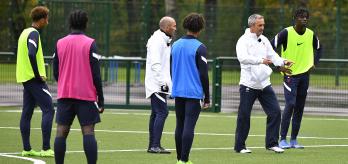
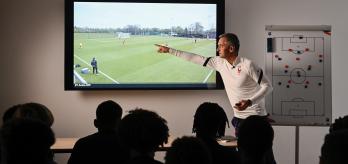
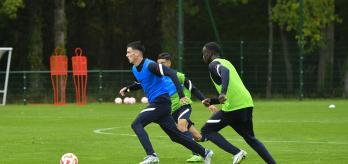
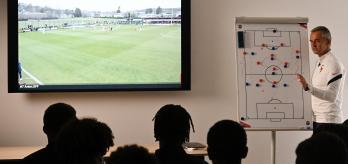
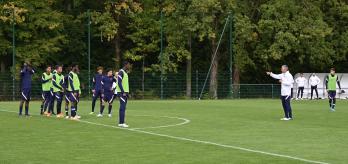
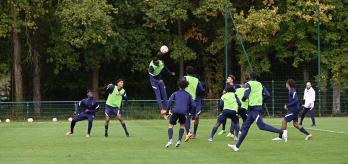
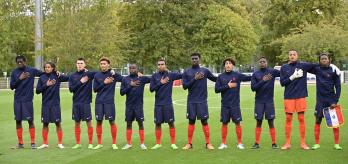
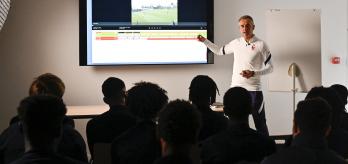
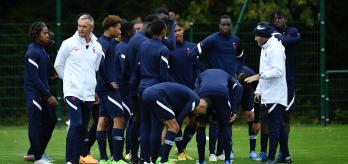
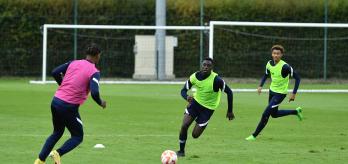

.variant64x64.jpeg)



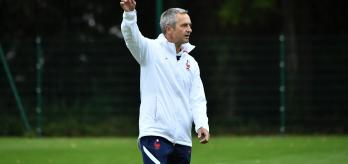
.variant348x164.jpeg)
